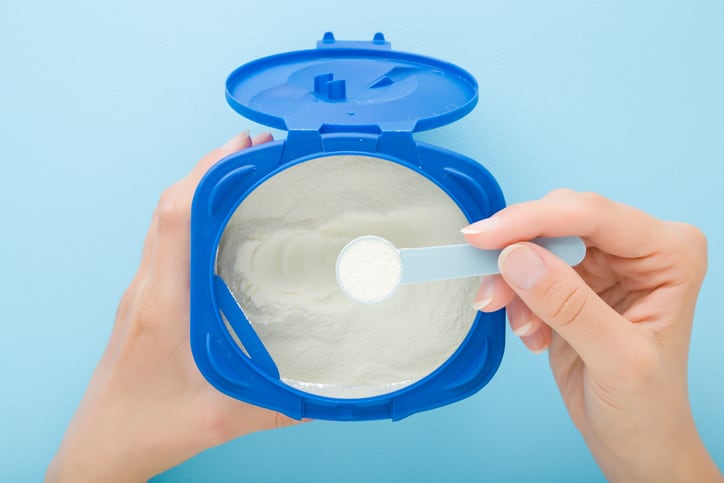The Global Infant Formula Ingredients Growth Opportunities report, by Frost & Sullivan, forecasts the market to hit $8.21 billion by 2025, up from $6.37 billion in 2020, an uptick at a compound annual growth rate (CAGR) of 5.2%.
Key drivers
Driving this growth is products that can closely mimic the breast milk composition. Smriti Sharma, Chemicals, Materials, and Nutrition Research Analyst at Frost & Sullivan, said there is a continuous effort to adapt and incorporate novel ingredients that can help formulators develop products that closely mimic breast milk composition.
“For example, Danone developed Nuturis, large, phospholipid coated lipid droplets that closely mimic the structure of human milk lipids. Danone research has shown that infants fed with infant formula comprising Nuturis displayed growth similar to that of breastfed infants. Another example is the specialty fat, called INFAT, developed by Advanced Lipids (Subsidiary of AAK AB) that resembles the unique Oleic and Palmitic Fatty Acid Structure (OPO) of human breast milk to enable better fat and calcium absorption. The demand for ingredients like INFAT has been particularly high in China, which is among the key adopters of premium, clinically backed nutritional ingredients. Milk Fat Globule Membrane (MFGM) Lipids is another example of specialized ingredient that helps formulators develop products that closely mimic the lipid profile of breast milk. In 2019, Enfagrow launched a product Enfagrow Neuropro, toddler milk containing cow's milk MFGM. Human Milk Oligosaccharides (HMOs), though not new, have recently garnered significant attention. After lactose and lipids, HMOs are the third-highest constituent of breast milk, and they play an important role in the development of infants’ immune system and maintaining gut health. A number of IF manufacturers have launched products with HMOs; for example, Danone China launched two new products under its Aptamil brand—Essensis and Aptamil Essensis Toddler— comprising A2 milk and the highest levels of HMOs (including 2’FL, 3’-GL and other GOS/FOS),” explained Sharma.
Sharma said that ingredients under spotlight driving majority of innovation in the space include prebiotics such as HMOs, probiotics with key focus on immune, gut and cognitive health, specialized lipids & fats that would aid in mimicking lipid profile of breast milk, as well as omega fatty acids for their role in cognitive and eye health.
“We also see a lot of potential for plant protein ingredients in infant formulas space backed by a shift in consumer perception and eating habits, which in general is driving demand for plant-based, vegan, organic food products.”
Additionally, the growing demand for non-allergenic and non- genetically-modified organisms (GMO) plant protein ingredients is also contributing to the growth.
The report also noted that rapid urbanization, growth of the middle class, and rising number of women participating in the labor force—especially in developing markets—are key factors driving the global infant formula ingredients market.
Innovation remains a key growth driver
In order to cater to changing consumer demand, Sharma told NutraIngredients-USA that manufacturers must continuously innovate and expand to offer novel functional ingredients that are positioned to meet changing consumer demand.
“For example, with the industry focusing on reducing protein levels in infant formula, protein fractions that can emulate breast milk closely while reducing the overall protein levels are expected to be the next-generation solution for formula manufacturers. Organic Ingredients are one of the strongest ways of creating product differentiation. Organic infant formula space is expected to expand globally, and ingredient manufacturers need to keep up and establish a strong supply chain to cater to changing demand.”
Sharma added that overall, the infant formula ingredient space will be powered by innovation across novel ingredients, which in turn will ensure higher market penetration.
“High growth opportunity is expected across novel emerging ingredients such as prebiotics, probiotics, plant-derived protein sources, and specialty fats, with organic ingredients expected to shape the future of clean-label infant formula products.”

